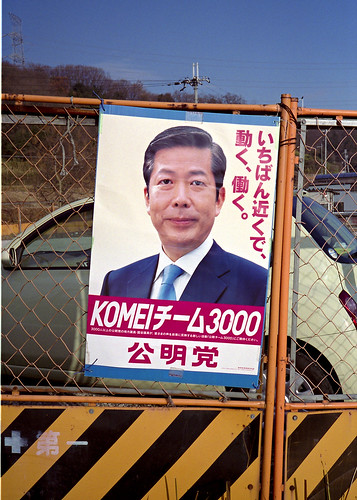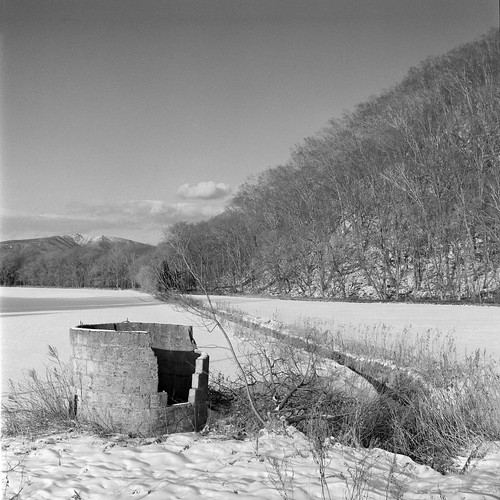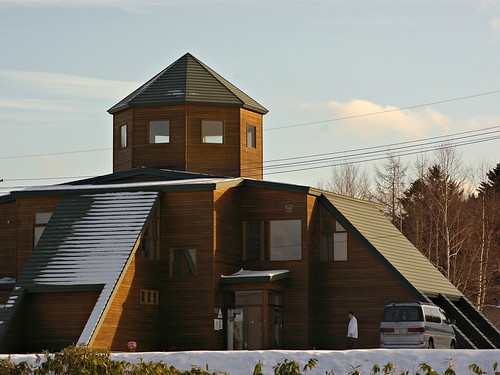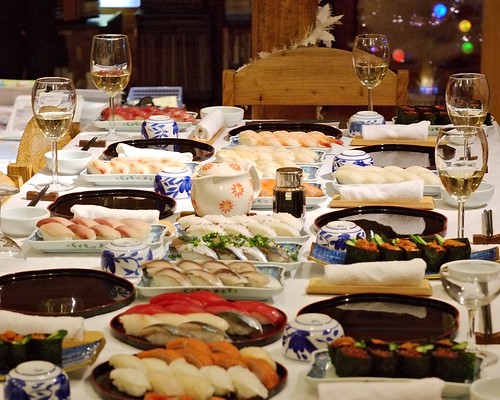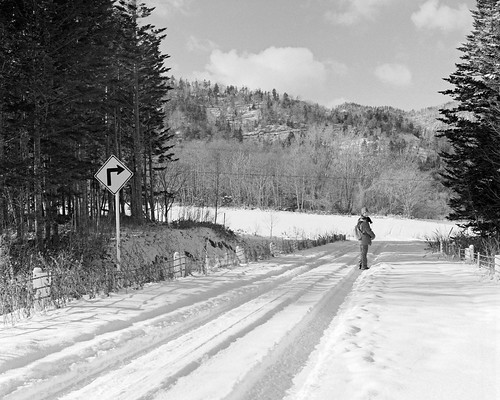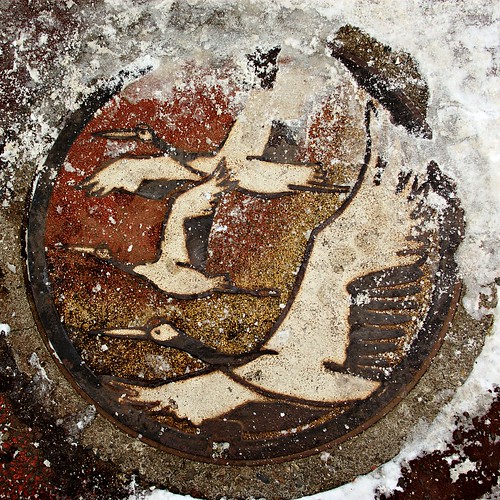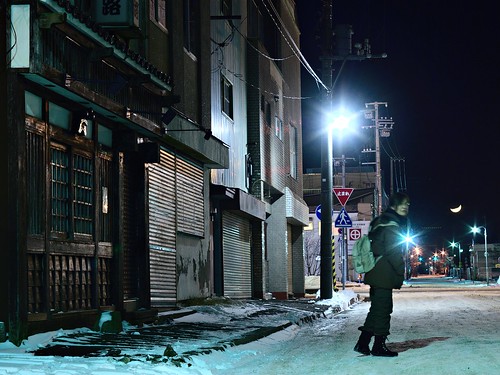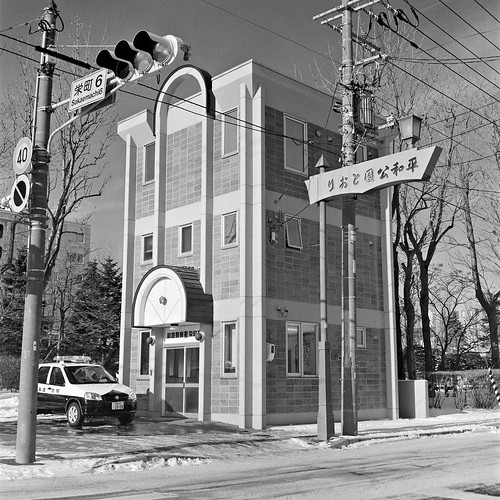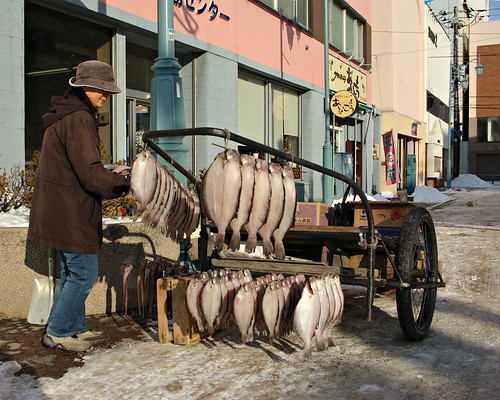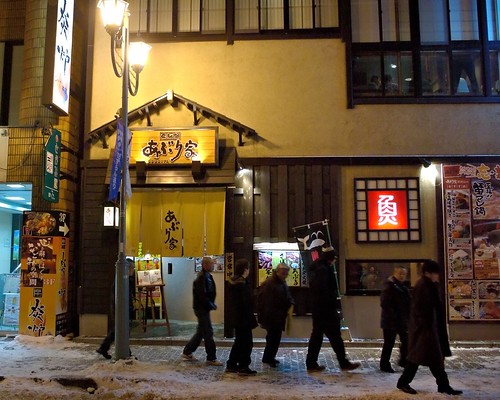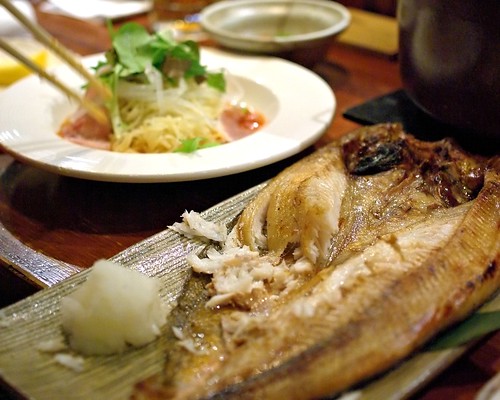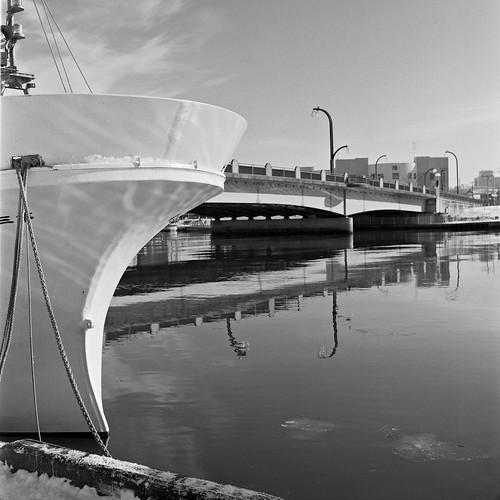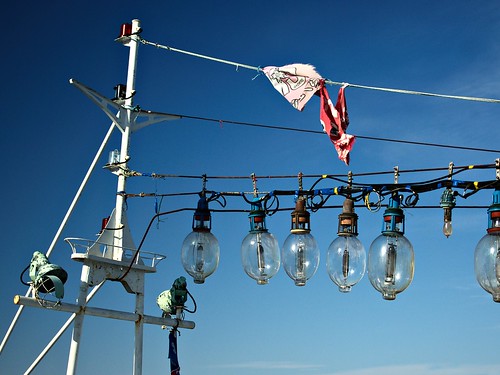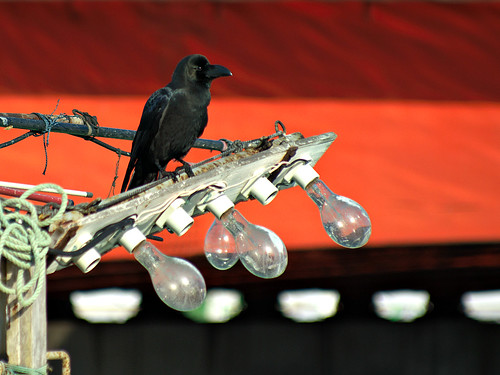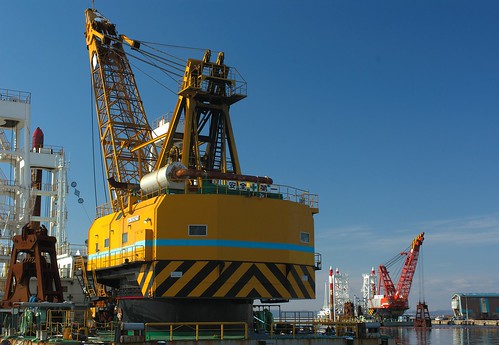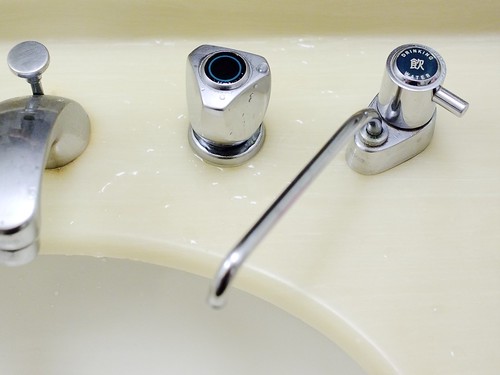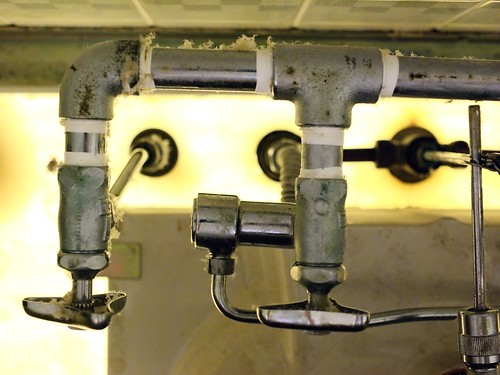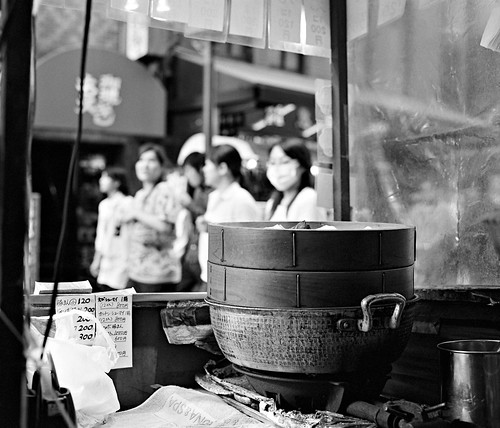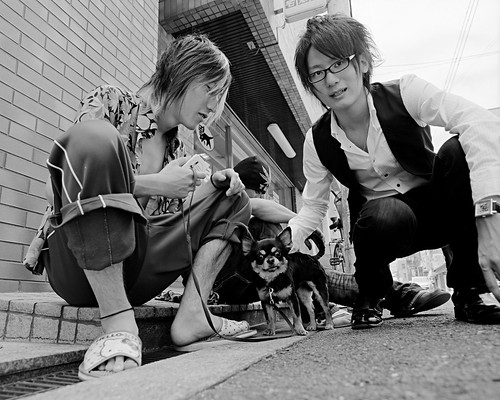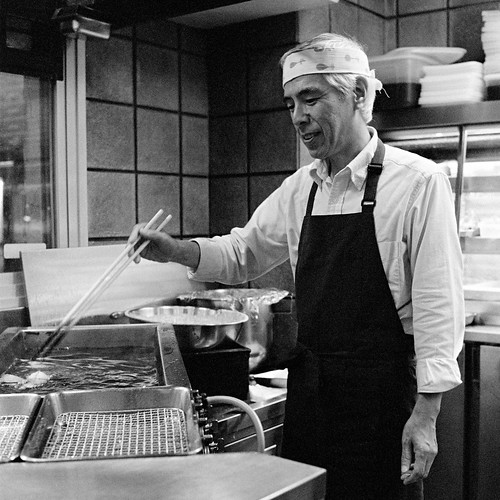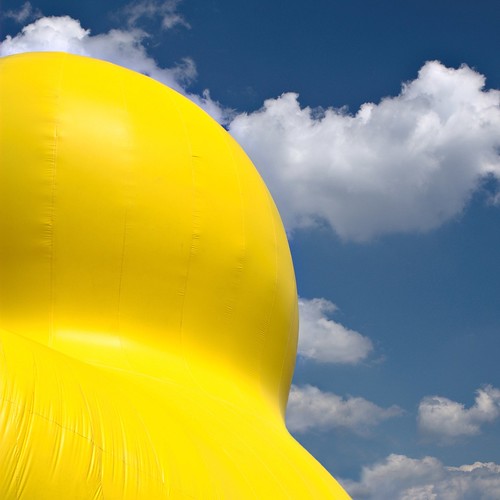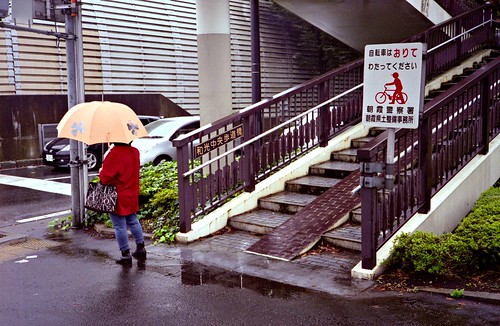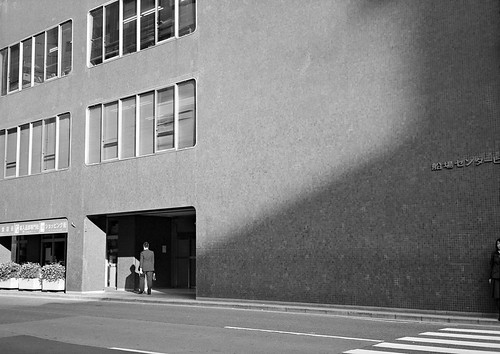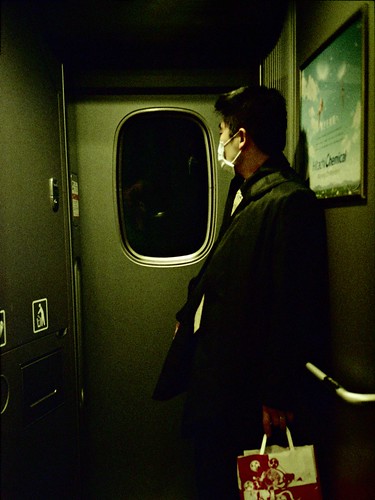Ikoma had an election to the city council recently, so there's been a few new election posters around. This is a recent one from New Komeito:
Now, perhaps it's just me, but frankly, the slogan on the right is a bit creepy: "The Very Closest to you, Moving, Working". What, "Closest"? As in, crowding people on the train? Showing up at home? And "Moving"? Can I expect to stumble over some oily Komeito candidate circling around my feet like some giant, insane suit-wearing cat when I try to get to the bathroom one morning? I can't say it inspires me to vote for them. It does make me want to put up some giant flypaper, perhaps, or maybe there's some kind of spray that'll keep them away.
The slogan on the bottom, "Team Komei 3000", is a bit touching on the other hand. "Now, we don't want our slogan to become dated, like all those 'Whatever-2000' ones did once the century turned. Better make sure we have a bit of a margin". I like the optimistic naivete implied here, that your party will actually be around a century from now, never mind a millennium.
Anyway, I guess the parties try out slogans and the like in local elections before they appear nationally. Just a hunch, but I suspect this one won't make it.
Friday, January 29, 2010
Tuesday, January 26, 2010
Hokkaido II: Kussharo
Kussharo is a remote rural area in eastern Hokkaido, in the Akan national park. We've come here once before, on our honeymoon, to stay at a youth hostel in the area run by an old friend of Ritsuko's. You take the train north from Kushiro, like we did now, or go east then south from the town of Abashiri in the north like we did last time. Either way it's a small two-car diesel-powered "rail bus"-train that's slow enough that you can see the sights outside, and charming enough that you don't mind the noise and rattle.
Kussharo is rural, but it's not a wilderness. Much of the area is farmland, streets are paved and there's clusters of summer homes and even the (very) occasional shop and restaurant1. Still, it's a long way from downtown Osaka. That, of course, is a big part of the appeal. It's a refreshing change to sleep without the sound of sirens, to go outside into wide-open stillness rather than bustling streets. To soak in an open-air hot spring on a winter night and see the stars, undimmed by the reflected glow of a large city.
The main industries in this area are farming and tourism, and Kussharo seems to share many problems with similar areas in Japan and elsewhere. Neither farming nor tourism need a lot of people - the sparse population is part of the attraction for tourists of course. But that means there's not enough people living in the area to support a dense infrastructure. Travelling here and getting around becomes more difficult and expensive than in populated areas. That hurts tourism of course, even though the very remoteness is a draw for people like us2.
Another problem, all too familiar to rural areas, is that the number of children can barely support a local school. A school is a critical bit of infrastructure; without it, no family with children would consider moving in, and young couples would often elect to move once their children reach school age. Without a school, the area would lose its next generation of inhabitants and risk disappearing as a community altogether.
Anyway, we stayed here right over Christmas. Every year, the hostel owner - Kazuyuki, a trained chef - puts on a Christmas sushi buffet, with all you can eat nigiri sushi, soup and cake. There were only a few other guests apart from us - as I said, travel is light the week before the New Year holiday - but with the owner and his family and the other staff we were still a fair number of people.
The sushi party is prepared. Plates of nigiri sushi - a dozen kinds, give or take - were prepared beforehand, and once they were gone Kazuyuki was taking requests from the adjoining kitchen.
The first night we didn't really do anything much. Ritsuko stayed at the hostel while I joined a guest from Hong Kong and went to a rotenburo - an outdoor hot spring - right next to Kussharo lake. We spent much of the next day walking in the snow-covered landscape, and joined the sushi party that night. The next morning we left again for Sapporo. Two or three nights really is just about right for this place in winter.
There's a few more pictures in the Kussharo set on Flickr.
The side roads across the fields aren't plowed, but there's enough traffic that you can use the tire tracks. That's Ritsuko over to the right.
--
Kussharo is rural, but it's not a wilderness. Much of the area is farmland, streets are paved and there's clusters of summer homes and even the (very) occasional shop and restaurant1. Still, it's a long way from downtown Osaka. That, of course, is a big part of the appeal. It's a refreshing change to sleep without the sound of sirens, to go outside into wide-open stillness rather than bustling streets. To soak in an open-air hot spring on a winter night and see the stars, undimmed by the reflected glow of a large city.
The main industries in this area are farming and tourism, and Kussharo seems to share many problems with similar areas in Japan and elsewhere. Neither farming nor tourism need a lot of people - the sparse population is part of the attraction for tourists of course. But that means there's not enough people living in the area to support a dense infrastructure. Travelling here and getting around becomes more difficult and expensive than in populated areas. That hurts tourism of course, even though the very remoteness is a draw for people like us2.
Another problem, all too familiar to rural areas, is that the number of children can barely support a local school. A school is a critical bit of infrastructure; without it, no family with children would consider moving in, and young couples would often elect to move once their children reach school age. Without a school, the area would lose its next generation of inhabitants and risk disappearing as a community altogether.
Anyway, we stayed here right over Christmas. Every year, the hostel owner - Kazuyuki, a trained chef - puts on a Christmas sushi buffet, with all you can eat nigiri sushi, soup and cake. There were only a few other guests apart from us - as I said, travel is light the week before the New Year holiday - but with the owner and his family and the other staff we were still a fair number of people.
The sushi party is prepared. Plates of nigiri sushi - a dozen kinds, give or take - were prepared beforehand, and once they were gone Kazuyuki was taking requests from the adjoining kitchen.
The first night we didn't really do anything much. Ritsuko stayed at the hostel while I joined a guest from Hong Kong and went to a rotenburo - an outdoor hot spring - right next to Kussharo lake. We spent much of the next day walking in the snow-covered landscape, and joined the sushi party that night. The next morning we left again for Sapporo. Two or three nights really is just about right for this place in winter.
There's a few more pictures in the Kussharo set on Flickr.
The side roads across the fields aren't plowed, but there's enough traffic that you can use the tire tracks. That's Ritsuko over to the right.
--
#1 Surprisingly, many facilities are closed over winter; I would have thought this was the high season for visitors. Guess not.
#2 That's people for you: we want remote, wide spaces, undisturbed by civilization - but we want that wilderness with good wireless connections, all-night convenience stores, a decent selection of restaurants and a bus stop or train station no more than five minutes away.
Sunday, January 24, 2010
Hokkaido I: Kushiro
Very delayed, but here's part one of (probably) three posts about our Hokkaido trip. I took three vacation days (oh, the luxury! the decadence!) and cunningly mixed them with calendar holidays to create a six-day christmas vacation. We flew to Kushiro on the south-eastern coast of Hokkaido where we stayed over night. Then on to Kussharo in the center of Hokkaido for two nights, and finally by train to Sapporo in the west where we stayed for the final two nights.
Kushiro manhole cover. These are so convenient; you have yourself an instant logo for every place you visit here in Japan.
Kushiro is a city and airport on the south-west coast of Hokkaido. It's not a tourist destination, really; it seems to mostly live by fishing and other industry in the area. There's large wetlands to the north, a crane reservation towards the airport and wildlife preserves in the area. It seems to attract a fair number of hikers, birdwatchers and fishermen, most of whom of course really just pass through the city itself.
Now, the bad thing about Kushiro is, it feels like a sleepy town of, oh, 30-40 thousand people. It's bad because the population is actually over 180.000 people, but the city center is in bad shape. There are few people around and it seems every third building is shuttered or empty along the major streets. And not just shops either, but hotels and entire office buildings stand abandoned. Cheap business hotels are doing well though; many bankers, lawyers and real estate people travel here for bankrupcy and foreclosure proceedings.
Side street in the city center, just on the corner to the north-south main street from the station. Moody and photogenic, true, but I can't honestly say it makes me want to settle down in the area.
An eloge to Ritsuko, who did her level best to stand still for the four-second exposure.
Without businesses to fill all those buildings there's a lack of jobs to be had. And without work, the young people leave for Sapporo in the east - or for Tokyo-Nagoya-Osaka, away from Hokkaido altogether. And once people leave they're not likely to come back. The recession is accelerating things of course, but Kushiro and other places like it has been losing people for years; major metropolitan hubs the world over are growing at the expense of smaller regional communities.
And in the case of Kushiro, some of the blame also falls on the city itself. According to locals, there's several new malls open in the suburbs, malls that are doing OK, but sucking the life out of the city center. That in turn hurts tourism and discourages people from moving here - who wants to live in a gloomy ghost town after all, if you can avoid it? Approving the construction of large malls on the periphery may make financial sense in the short term, but hurts the city badly over time. And the loss of tax revenue from the center and the cost of "revitalization efforts" probably eats most of the tax revenue from those malls anyway.
The city is quite pleasant to walk around in, and it feels there should be more people and more activity than there is. Here's a koban - a neighbourhood police station - right next to a park.
The good things about Kushiro, on the other hand, are very good. Delicious in fact. It is, of course, the food. We had dinner, breakfast buffé and lunch, in that order, and were not served a single molecule that was anything less than delicious.
Fish on sale along the main street. If you like fish, Hokkaido is the place to go. Better, fresher and cheaper than anywhere else in the country.
The breakfast buffé at the chain hotel (Tokyo Inn) had several varieties of fish including salmon and whole shishamo; miso soup, okayu, natto and rice; breads, sausage, ham, potatoes and scrambled eggs; tofu, onsen tamago and udon; salads, fruit and yoghurt; milk, juices, tea (Japanese and English) and coffee (regular and espresso). It was far beyond any I've had at a business hotel before in both variety and quality, and better than most breakfasts I've had at much higher class hotels.
Lunch was Kushiro-style ramen - thin noodles in a soy-based soup. And while it was light it was still savoury and warming - perfect after a few hours of walking along the waterfront.
The high point was "Aburiya", a Robata-style restaurant, where the food - fish and meat - is cooked on large charcoal griddles in the middle of the room. Here, again, every single thing we ordered was great. We weren't the only ones to think so either; the restaurant was packed with locals, and we only just managed to get two seats along the counter. Which, by the way, is much more fun than getting a table, as you can see the cooks work the hot griddles. We had hokke, hoya, ramen salad, steak, "Inka potatoes" (yellow and very flavourful, served with butter), onigiri, ochazuke and clam miso soup.
Kushiro is known for its robata restaurants. Aburiya is recommended by a fair number of people, and for good reason.
Hokke is a kind of mackerel native to the Hokkaido area. It's often served like this: opened, dried, then grilled and eaten like this. The savoury, firm meat is delicious as is; lemon or soy sauce would only dilute the taste. The plate in the background is a ramen salad.
Hoya is sea squirt, a relative of the sea anemone, for instance. It's swims freely as a juvenile, but as an adult it settles onto a rock and makes a living by siphoning the water for algae. At Aburiya you lightly grill it yourself at the table, and eat with a drop of lemon. I really liked hoya - it's similar in flavour and texture to grilled oysters - but Ritsuko didn't really take to it.
The waterfront is right in the city center, south of the station. Working boats lie right along the city streets and bridges.
Squid fishing boats use rows of bright lamp lights to attact squid at night. This, by the way, caused some issues when oil prices spiked a couple of years ago; the generators they use to power the lights consume a fair amount of diesel. Squid fishermen demanded (and, I think, got) a subsidy for the lamp diesel. I can't help thinking there has to be a less wasteful way of doing it.
Kushiro manhole cover. These are so convenient; you have yourself an instant logo for every place you visit here in Japan.
Kushiro is a city and airport on the south-west coast of Hokkaido. It's not a tourist destination, really; it seems to mostly live by fishing and other industry in the area. There's large wetlands to the north, a crane reservation towards the airport and wildlife preserves in the area. It seems to attract a fair number of hikers, birdwatchers and fishermen, most of whom of course really just pass through the city itself.
Now, the bad thing about Kushiro is, it feels like a sleepy town of, oh, 30-40 thousand people. It's bad because the population is actually over 180.000 people, but the city center is in bad shape. There are few people around and it seems every third building is shuttered or empty along the major streets. And not just shops either, but hotels and entire office buildings stand abandoned. Cheap business hotels are doing well though; many bankers, lawyers and real estate people travel here for bankrupcy and foreclosure proceedings.
Side street in the city center, just on the corner to the north-south main street from the station. Moody and photogenic, true, but I can't honestly say it makes me want to settle down in the area.
An eloge to Ritsuko, who did her level best to stand still for the four-second exposure.
Without businesses to fill all those buildings there's a lack of jobs to be had. And without work, the young people leave for Sapporo in the east - or for Tokyo-Nagoya-Osaka, away from Hokkaido altogether. And once people leave they're not likely to come back. The recession is accelerating things of course, but Kushiro and other places like it has been losing people for years; major metropolitan hubs the world over are growing at the expense of smaller regional communities.
And in the case of Kushiro, some of the blame also falls on the city itself. According to locals, there's several new malls open in the suburbs, malls that are doing OK, but sucking the life out of the city center. That in turn hurts tourism and discourages people from moving here - who wants to live in a gloomy ghost town after all, if you can avoid it? Approving the construction of large malls on the periphery may make financial sense in the short term, but hurts the city badly over time. And the loss of tax revenue from the center and the cost of "revitalization efforts" probably eats most of the tax revenue from those malls anyway.
The city is quite pleasant to walk around in, and it feels there should be more people and more activity than there is. Here's a koban - a neighbourhood police station - right next to a park.
The good things about Kushiro, on the other hand, are very good. Delicious in fact. It is, of course, the food. We had dinner, breakfast buffé and lunch, in that order, and were not served a single molecule that was anything less than delicious.
Fish on sale along the main street. If you like fish, Hokkaido is the place to go. Better, fresher and cheaper than anywhere else in the country.
The breakfast buffé at the chain hotel (Tokyo Inn) had several varieties of fish including salmon and whole shishamo; miso soup, okayu, natto and rice; breads, sausage, ham, potatoes and scrambled eggs; tofu, onsen tamago and udon; salads, fruit and yoghurt; milk, juices, tea (Japanese and English) and coffee (regular and espresso). It was far beyond any I've had at a business hotel before in both variety and quality, and better than most breakfasts I've had at much higher class hotels.
Lunch was Kushiro-style ramen - thin noodles in a soy-based soup. And while it was light it was still savoury and warming - perfect after a few hours of walking along the waterfront.
The high point was "Aburiya", a Robata-style restaurant, where the food - fish and meat - is cooked on large charcoal griddles in the middle of the room. Here, again, every single thing we ordered was great. We weren't the only ones to think so either; the restaurant was packed with locals, and we only just managed to get two seats along the counter. Which, by the way, is much more fun than getting a table, as you can see the cooks work the hot griddles. We had hokke, hoya, ramen salad, steak, "Inka potatoes" (yellow and very flavourful, served with butter), onigiri, ochazuke and clam miso soup.
Kushiro is known for its robata restaurants. Aburiya is recommended by a fair number of people, and for good reason.
Hokke is a kind of mackerel native to the Hokkaido area. It's often served like this: opened, dried, then grilled and eaten like this. The savoury, firm meat is delicious as is; lemon or soy sauce would only dilute the taste. The plate in the background is a ramen salad.
Hoya is sea squirt, a relative of the sea anemone, for instance. It's swims freely as a juvenile, but as an adult it settles onto a rock and makes a living by siphoning the water for algae. At Aburiya you lightly grill it yourself at the table, and eat with a drop of lemon. I really liked hoya - it's similar in flavour and texture to grilled oysters - but Ritsuko didn't really take to it.
The waterfront is another asset of the city. It's pretty cool, with a mix of working boats and some tourist-oriented stuff. Fishing boats lie right along the river towards the sea, and the heavy barges, coast guard vessels and other "real" working stuff is easy to get to and see up close.
There's a shopping market and community center of sorts - MOO - right on the river edge that is surprisingly good, with lots of local products, eateries, exhibition areas, a Hello Work office, an arboretum (very pleasant in the winter) and so on. It wasn't exactly bustling, but it wasn't empty either. We got a bottle of the local sake, and some really tasty cheese-senbei. There is - or was, I'm not sure - a local brewery nearby with pub and tours as well, but it was closed when we got there. The week around christmas is low season for travel here (the New Years holiday starts one week later), so our impression of things may well be more downbeat than normal.
There's more pictures of Kushiro in my Kushiro set on flickr, for anyone interested.
There's a shopping market and community center of sorts - MOO - right on the river edge that is surprisingly good, with lots of local products, eateries, exhibition areas, a Hello Work office, an arboretum (very pleasant in the winter) and so on. It wasn't exactly bustling, but it wasn't empty either. We got a bottle of the local sake, and some really tasty cheese-senbei. There is - or was, I'm not sure - a local brewery nearby with pub and tours as well, but it was closed when we got there. The week around christmas is low season for travel here (the New Years holiday starts one week later), so our impression of things may well be more downbeat than normal.
There's more pictures of Kushiro in my Kushiro set on flickr, for anyone interested.
The waterfront is right in the city center, south of the station. Working boats lie right along the city streets and bridges.
Squid fishing boats use rows of bright lamp lights to attact squid at night. This, by the way, caused some issues when oil prices spiked a couple of years ago; the generators they use to power the lights consume a fair amount of diesel. Squid fishermen demanded (and, I think, got) a subsidy for the lamp diesel. I can't help thinking there has to be a less wasteful way of doing it.
Thursday, January 21, 2010
Ozawa is on the ropes
Ozawa's time on the national scene may really be short. More information is emerging that he was personally aware of, and approved some of the dodgy deals under investigation. Prime minister Hatoyama has declared that Ozawa can clear his name once and for all by laying it all out and explaining the whole thing to the public's satisfaction. The implication is of course that would Ozawa not be able to fully explain everything (and the investigation leaks certainly suggest he can't) then his days as a DPJ official may be cut very short indeed.
The only question in my mind is why Hatoyama hasn't taken steps to remove Ozawa already. The DPJ won their mandate on cleaning up and reforming the political process, and this kind of thing is exactly what the DPJ leadership should work to uproot, not take part in themselves. This is the single most damaging thing that could happen to the DPJ and they must be acutely aware of that fact.
For the DPJ it doesn't really matter if Ozawa's dealings have broken the law or not; just their dodgy appearance and the guilty-looking efforts to hide them is damning in the public eye. With the loss of all public trust he is no longer able to function effectively as an elected official. He should realize that and resign. Failing that the DPJ leadership should and resign him in his stead.
Edit: Our Man In Abiko puts it admirably succinctly.
The only question in my mind is why Hatoyama hasn't taken steps to remove Ozawa already. The DPJ won their mandate on cleaning up and reforming the political process, and this kind of thing is exactly what the DPJ leadership should work to uproot, not take part in themselves. This is the single most damaging thing that could happen to the DPJ and they must be acutely aware of that fact.
For the DPJ it doesn't really matter if Ozawa's dealings have broken the law or not; just their dodgy appearance and the guilty-looking efforts to hide them is damning in the public eye. With the loss of all public trust he is no longer able to function effectively as an elected official. He should realize that and resign. Failing that the DPJ leadership should and resign him in his stead.
Edit: Our Man In Abiko puts it admirably succinctly.
Immigration Point System
There's a proposed new immigration policy being floated (didn't see the article in Japanese) from the Justice Ministry where Japan would create a "point system" similar to that of Canada for immigrants. The idea is that anything that has value for living in Japan - education, work experience, language skills, Japanese dependants and so on - gives you points, and above a certain threshold you're deemed "valuable" and get preferential treatment for work visas, permanent residency and so on.
It's a good idea. The Canadian system seems to work fairly well. Of course, the Swedish version of it is even simpler: If you've got a job in Sweden, at the same wages and benefits as native Swedes, then you must be of value to the employer and thus to Sweden, so you get a two year work visa. Stay employed for long enough and you get permanent residency.
The good thing about it is that there's no arbitrary determination about who's "valuable" and who's not. If an employer wants to go to the extra effort and expense of bringing in somebody to Sweden at the same salary level as a native Swede then it's because that person really is valuable to them.
The system came about in part because under the old rules a restaurant could usually not hire an Indian chef or a Japanese sushi master because cooks were "manual labour", not specialists, and you were expected to hire Swedish workers for that. If you wanted to, say, open a high-grade sushi restaurant you had to staff it with a Swedish cook who may do smoked salmon and Hollandaise like a god, but likely has no clue about how to prepare sashimi.
Anyway, any opening up of immigration is good. People tend to really overestimate how attractive their country is to foreigners. Japan could probably throw their doors wide open and there'd still be no huge influx of immigrants . The doors have been open for many years to Brazilians of Japanese descent, and while a fair number have come here there was never a rush; the vast majority of potential immigrants obviously prefer to stay where they are.
The same would largely be true for Europe and the US as well. Most people who are determined to enter the US or the EU already do, one way or another. Opening the doors would not really increase those numbers significantly. And completely open immigration would have a counter-effect too: when you know you could move any time, you do so if or when it's convenient, not grasping the first chance you get. Immigrants would in other words be better prepared and better motivated. Whan you can re-enter at any time it's also easier for immigrants to leave if things aren't working out, rather than desperately hanging on.
I know it's a pipe dream, and free movement is never going to happen. It would be nice if it did, though.
It's a good idea. The Canadian system seems to work fairly well. Of course, the Swedish version of it is even simpler: If you've got a job in Sweden, at the same wages and benefits as native Swedes, then you must be of value to the employer and thus to Sweden, so you get a two year work visa. Stay employed for long enough and you get permanent residency.
The good thing about it is that there's no arbitrary determination about who's "valuable" and who's not. If an employer wants to go to the extra effort and expense of bringing in somebody to Sweden at the same salary level as a native Swede then it's because that person really is valuable to them.
The system came about in part because under the old rules a restaurant could usually not hire an Indian chef or a Japanese sushi master because cooks were "manual labour", not specialists, and you were expected to hire Swedish workers for that. If you wanted to, say, open a high-grade sushi restaurant you had to staff it with a Swedish cook who may do smoked salmon and Hollandaise like a god, but likely has no clue about how to prepare sashimi.
Anyway, any opening up of immigration is good. People tend to really overestimate how attractive their country is to foreigners. Japan could probably throw their doors wide open and there'd still be no huge influx of immigrants . The doors have been open for many years to Brazilians of Japanese descent, and while a fair number have come here there was never a rush; the vast majority of potential immigrants obviously prefer to stay where they are.
The same would largely be true for Europe and the US as well. Most people who are determined to enter the US or the EU already do, one way or another. Opening the doors would not really increase those numbers significantly. And completely open immigration would have a counter-effect too: when you know you could move any time, you do so if or when it's convenient, not grasping the first chance you get. Immigrants would in other words be better prepared and better motivated. Whan you can re-enter at any time it's also easier for immigrants to leave if things aren't working out, rather than desperately hanging on.
I know it's a pipe dream, and free movement is never going to happen. It would be nice if it did, though.
Monday, January 18, 2010
The False Tap
My scanner is back home again, it's working nicely and I've already started scanning the film I took during our trip to Hokkaido in December. The posts will have to wait a while longer, though, as I don't have all that much time to spend on image editing right now.
However, I thought I'd show you this neat cognitive hack we found at our hotel in Sapporo:
The bathroom sink, with a normal tap and faucet handle to the left, and a slender tap marked "Drinking Water" to the right.
Here's the same sink from below. The water pipe enters from the upper right, splits, and goes to the "Drinking Water" tap on the left and to the faucet handle in the center, where it continues to the tap itself on the right.
The "Drinking Water" tap and the normal tap right next to it give you the exact same water, in other words. Fraud? Deception? No, not at all. Just a neat psychological trick to make their customers more comfortable.
Tap-water in Japan (as in Sweden and some other countries) is not only safe to drink, but often quite good. If you live here you never need think twice about drinking water directly from a tap. In many countries, however, even wealthy and highly developed ones, tapwater is unsafe, or if safe then not very palatable due to high mineral levels, chlorine or other reasons. If you live in such a place you either drink bottled water or you have a water filter with its own tap1. And so the hotel receives plenty of guests that do not consider tap-water to be drinkable.
The hotel could put up signs of course, telling their guests that the water is safe and good. And indeed, I've seen such signs in many hotels. The problem is, we humans are lousy at heeding signs and directions2, and a lifelong habit prevents many of these guests from trusting the tap water, sign or no sign.
Another option would be to provide each room with bottled water. And they do that already, for a fee, in the hotel bar and in vending machines. But most people aren't very happy with having to pay for plain water when they're thirsty or need to take some medication. It smacks of greed, like having to pay extra for towels. Supplying free water bottles would add another ongoing expense, and create a small mountain of empty bottles - an environmental PR headache as well as increasing garbage disposal costs.
Instead, they add this tap. Mind you, it is completely accurate and on the level - it really is good, clean, tasty drinking water. It's in fact likely to be the exact same water as the local bottled water. The tap doesn't change the water; all it does is package the water to make it palatable for its guests. And really, that's all bottled water does too, just at added cost and with environmental and disposal headaches.
And I bet this really works. Our low-level emotions - such as disgust, which deals with what is safe to eat, drink and touch - aren't very analytical. They tend to work on concrete and immediate things, not abstract or long-term ones. Many people from places with bad water won't drink tap water even when they know it's safe and good. Their low-level emotions have learned that "tap = bad" and their sense of disgust will kick in whether they want it to or not.
But this tap looks and feels different - and it's just the kind of tap you'd have from a water filter. Even though the guests may well realize it's just tap water, their low-level disgust never reacts since it doesn't look like the kind of tap that is dangerous. And it really needs to look and feel different; the more different the better. Had they added a second, normal tap with a sign it wouldn't have worked at all, even if that tap had been connected to an actual water filter.
It's all about fooling your low-level emotions. They have a huge influence on our behavior and they don't do subtlety, foresight or abstractions very well. We spend a fair amount of our high-level mental resources subverting, co-opting and otherwise manipulating our own low-level systems in order to make ourselves do what we want.
When you put away the cake or the bowl of snacks just so you'll stop eating; when you turn away and bite your lip to distract yourself and lessen the fear of an injection; when you bring a lucky charm or other "safe", familiar object to an anxiety-inducing test or interview; when you deliberately buy groceries when full so you won't impulse buy, you're engaged in a battle or wits with your own low-level emotions.
These low-level emotional systems are really fascinating; I used to work in that area and sometimes wish that I'd continued doing so. I may return to that field someday.
--
However, I thought I'd show you this neat cognitive hack we found at our hotel in Sapporo:
The bathroom sink, with a normal tap and faucet handle to the left, and a slender tap marked "Drinking Water" to the right.
Here's the same sink from below. The water pipe enters from the upper right, splits, and goes to the "Drinking Water" tap on the left and to the faucet handle in the center, where it continues to the tap itself on the right.
The "Drinking Water" tap and the normal tap right next to it give you the exact same water, in other words. Fraud? Deception? No, not at all. Just a neat psychological trick to make their customers more comfortable.
Tap-water in Japan (as in Sweden and some other countries) is not only safe to drink, but often quite good. If you live here you never need think twice about drinking water directly from a tap. In many countries, however, even wealthy and highly developed ones, tapwater is unsafe, or if safe then not very palatable due to high mineral levels, chlorine or other reasons. If you live in such a place you either drink bottled water or you have a water filter with its own tap1. And so the hotel receives plenty of guests that do not consider tap-water to be drinkable.
The hotel could put up signs of course, telling their guests that the water is safe and good. And indeed, I've seen such signs in many hotels. The problem is, we humans are lousy at heeding signs and directions2, and a lifelong habit prevents many of these guests from trusting the tap water, sign or no sign.
Another option would be to provide each room with bottled water. And they do that already, for a fee, in the hotel bar and in vending machines. But most people aren't very happy with having to pay for plain water when they're thirsty or need to take some medication. It smacks of greed, like having to pay extra for towels. Supplying free water bottles would add another ongoing expense, and create a small mountain of empty bottles - an environmental PR headache as well as increasing garbage disposal costs.
Instead, they add this tap. Mind you, it is completely accurate and on the level - it really is good, clean, tasty drinking water. It's in fact likely to be the exact same water as the local bottled water. The tap doesn't change the water; all it does is package the water to make it palatable for its guests. And really, that's all bottled water does too, just at added cost and with environmental and disposal headaches.
And I bet this really works. Our low-level emotions - such as disgust, which deals with what is safe to eat, drink and touch - aren't very analytical. They tend to work on concrete and immediate things, not abstract or long-term ones. Many people from places with bad water won't drink tap water even when they know it's safe and good. Their low-level emotions have learned that "tap = bad" and their sense of disgust will kick in whether they want it to or not.
But this tap looks and feels different - and it's just the kind of tap you'd have from a water filter. Even though the guests may well realize it's just tap water, their low-level disgust never reacts since it doesn't look like the kind of tap that is dangerous. And it really needs to look and feel different; the more different the better. Had they added a second, normal tap with a sign it wouldn't have worked at all, even if that tap had been connected to an actual water filter.
It's all about fooling your low-level emotions. They have a huge influence on our behavior and they don't do subtlety, foresight or abstractions very well. We spend a fair amount of our high-level mental resources subverting, co-opting and otherwise manipulating our own low-level systems in order to make ourselves do what we want.
When you put away the cake or the bowl of snacks just so you'll stop eating; when you turn away and bite your lip to distract yourself and lessen the fear of an injection; when you bring a lucky charm or other "safe", familiar object to an anxiety-inducing test or interview; when you deliberately buy groceries when full so you won't impulse buy, you're engaged in a battle or wits with your own low-level emotions.
These low-level emotional systems are really fascinating; I used to work in that area and sometimes wish that I'd continued doing so. I may return to that field someday.
--
#1 Or you're poor and have no choice but to drink bad water. Or you don't have ready access to water at all. Which is an outrage, but off-topic to this particular post.
#2 When was the last time you bothered to actually read the instructions for a gadget? Especially for a simple one, like a tap, that you already think you know all you need to use.
Saturday, January 16, 2010
Ozawa On His Way Out?
Ichiro Ozawa, former DPJ president, former independent party head, former LDP member, kingmaker, power broker and all-around political backroom fixer extraordinaire may finally be on his way out of politics altogether.
His political office has been under investigation for illegal campaign donations and related things for over a year, but now funny money and a shady land deal is being traced directly to his office rather than his campaign organization. His personal secretary received what very much looks like payback from a construction company in return for receiving a dam construction contract, and two aides of his have just been arrested.
The reactions from DPJ has been supportive all along, but the tone seems to have shifted lately. Comments from DPJ members talk about how Ozawa will fight this to the end (but not that the commenter wants him to do so), and that the prosecutors will be in trouble if they fail to come up with credible evidence (but not that there is no evidence to find). Comments about how Ozawa is innocent are conspicuously thin on the ground. Hatoyama - whose own funding scandal seems to be blowing over - says he has no intention of asking Ozawa to step down. Of course, that's exactly the kind of thing you'd say about a week before you "reluctantly accept" the scandal-hit subject's resignation "to spend more time with their family".
Some people such as MTC see a political motive in the prosecutor's zeal in investigating Ozawa specifically, while letting LDP politicians infractions slide. It's quite true that the judicial branch is not nearly as apolitical and independent as it is in other countries, and it would not be the first time the police and prosecutors have affected the political process.
My take? He's dirty and the prosecutors - politically motivated or not - will be able to make a good enough case that he'll have to resign from politics. Just because the police has an underhanded motive doesn't mean they aren't right in this case. Japanese politics is famous for its endemic money troubles and illegal deals - it's frequently stated that you can't win a Japanese election without breaking the law - and Ozawa is practically the poster boy for the scheming, double-dealing Japanese politician. It's certainly possible that he hasn't taken dirty money from the construction industry. It's also possible that the pope is an atheist, that the moon landings were faked and that Elvis is still alive, but I wouldn't want to take a bet on it.
When Ozawa took the reins of the DPJ it was a party in total disarray. It wasn't a unified party as much as a collection of disparate groups with the burning desire to take down the LDP as its only common cause. The party was adrift, rocked by scandals and leadership issues, and he acted as an anchor, giving the party a coherent program and a viable political strategy. It's fair to say that without Ozawa the DPJ would perhaps not exist today, and the LDP would probably still be in power.
However, Ozawa is also an anchor to the old style of Japanese politics. He is also a consummate kingmaker and power broker1 and the media is asking, not unfairly, just how much influence he is wielding over the Hatoyama government. An important part of the DPJ program he formulated is a clean break away from this way, and that ultimately means that Ozawa himself (and, eventually, other old-style politicians) needs to go.
This may be a good time for him to step down, scandal or not. The LDP has been trying (but so far failing miserably) to discredit the DPJ through these scandals. But if these ongoing scandals are still front and center in the news in July and the upper house election they can probably hurt the DPJ. As Ozawa will need to step down at some point anyhow, this development may actually do the DPJ (and Ozawa's own health) some good by forcing his hand.
--
His political office has been under investigation for illegal campaign donations and related things for over a year, but now funny money and a shady land deal is being traced directly to his office rather than his campaign organization. His personal secretary received what very much looks like payback from a construction company in return for receiving a dam construction contract, and two aides of his have just been arrested.
The reactions from DPJ has been supportive all along, but the tone seems to have shifted lately. Comments from DPJ members talk about how Ozawa will fight this to the end (but not that the commenter wants him to do so), and that the prosecutors will be in trouble if they fail to come up with credible evidence (but not that there is no evidence to find). Comments about how Ozawa is innocent are conspicuously thin on the ground. Hatoyama - whose own funding scandal seems to be blowing over - says he has no intention of asking Ozawa to step down. Of course, that's exactly the kind of thing you'd say about a week before you "reluctantly accept" the scandal-hit subject's resignation "to spend more time with their family".
Some people such as MTC see a political motive in the prosecutor's zeal in investigating Ozawa specifically, while letting LDP politicians infractions slide. It's quite true that the judicial branch is not nearly as apolitical and independent as it is in other countries, and it would not be the first time the police and prosecutors have affected the political process.
My take? He's dirty and the prosecutors - politically motivated or not - will be able to make a good enough case that he'll have to resign from politics. Just because the police has an underhanded motive doesn't mean they aren't right in this case. Japanese politics is famous for its endemic money troubles and illegal deals - it's frequently stated that you can't win a Japanese election without breaking the law - and Ozawa is practically the poster boy for the scheming, double-dealing Japanese politician. It's certainly possible that he hasn't taken dirty money from the construction industry. It's also possible that the pope is an atheist, that the moon landings were faked and that Elvis is still alive, but I wouldn't want to take a bet on it.
When Ozawa took the reins of the DPJ it was a party in total disarray. It wasn't a unified party as much as a collection of disparate groups with the burning desire to take down the LDP as its only common cause. The party was adrift, rocked by scandals and leadership issues, and he acted as an anchor, giving the party a coherent program and a viable political strategy. It's fair to say that without Ozawa the DPJ would perhaps not exist today, and the LDP would probably still be in power.
However, Ozawa is also an anchor to the old style of Japanese politics. He is also a consummate kingmaker and power broker1 and the media is asking, not unfairly, just how much influence he is wielding over the Hatoyama government. An important part of the DPJ program he formulated is a clean break away from this way, and that ultimately means that Ozawa himself (and, eventually, other old-style politicians) needs to go.
This may be a good time for him to step down, scandal or not. The LDP has been trying (but so far failing miserably) to discredit the DPJ through these scandals. But if these ongoing scandals are still front and center in the news in July and the upper house election they can probably hurt the DPJ. As Ozawa will need to step down at some point anyhow, this development may actually do the DPJ (and Ozawa's own health) some good by forcing his hand.
--
#1 In an earlier era and different place he'd be the Grand Vizier constantly scheming behind the Caliphs back, complete with pointy beard and evil cackling laughter.
Friday, January 15, 2010
Back again (again)
Came back from Hokkaido again last night. I have some deadlines coming up so not much time to post, but in short Hokkaido has lots of snow; Rusutsu ski resort is comfortable and pleasant; the skiing looked great but I never had time to actually do any; the workshop itself was well worth the trip; and amusement parks look pretty cool when they're closed over winter and covered in snow.
Sunday, January 10, 2010
To Hokkaido (again)
I'm off to Hokkaido yet again, next week. This time it's work though; there's a three-day workshop on neuroscience and neurocomputing and we're presenting a couple of posters on our work so far. This workshop is held twice a year and I attended last summer too. It's a fairly informal meeting so it's easy to talk with people and learn about what other groups are doing.
The venue for the winter workshop is Rusutsu, a large winter sports area in Hokkaido. Which sounds glamorous and all, but I'll be bunking in a cabin with five other, completely unknown, people, and I'll be too busy to have any time for any actual skiing. Also, this is a resort-type of place so there's no internet in the cabin, and I can't be sure there's a connection available at the workshop either. On the upside it gives me some truly free time to work on stuff without distraction.
The venue for the winter workshop is Rusutsu, a large winter sports area in Hokkaido. Which sounds glamorous and all, but I'll be bunking in a cabin with five other, completely unknown, people, and I'll be too busy to have any time for any actual skiing. Also, this is a resort-type of place so there's no internet in the cabin, and I can't be sure there's a connection available at the workshop either. On the upside it gives me some truly free time to work on stuff without distraction.
Tuesday, January 5, 2010
Looking forward to 2010
It's Tuesday and the new year work-week has begun. Oh, technically it began yesterday - and I was toiling away at work, like a good little scientist - but half the businesses were still closed and the morning train was empty enough that I got a seat at once. Today, though, it's all back to business as normal.
What do we have to look forward to with this new, shiny still-has-that-new-year-smell 2010? Politically we have the Japanese upper house elections in July, and we have the Swedish parliamentary elections in September.
In Japan the ruling DPJ hopes to get an outright majority in the upper house, of course, so they don't have to tiptoe around their small allies in the current government. Will they get it? It's hard to say. They've been making decent moves on some issues (they're floating a proposal to loosen the bizarre restrictions on campaigning online, for instance) but rather messing up other things such as the future location of US bases in Okinawa1.
They've had some interesting approaches to dealing with their more boneheaded election promises. The promise to abolish highway tolls - going against the premise of their financing and against any environmental goals - is in practice a removal of tolls this year only, and excepting some of the most heavily trafficked areas. The "gasoline surcharge" will be removed - but immediately replaced with an environmental tax instead.
Both Ozawa and Hatoyama are still parading in the headlines almost daily due to their "fundraising irregularities", something for which the LDP is assuredly eternally grateful.
Nevertheless, the DPJ government still has a majority approval in opinion polls even in the most rabidly anti-DPJ newspapers. I think the election really is a matter of whether the voters see the current mess as teething problems, or deep-seated incompetence. And of course, the alternative is the LDP which has yet to give anybody a reason to vote for them again after their collapse last August.
In Sweden there's parliamentary elections on the 19th of September. The current center-right coalition government has done a decent job overall, but is down in the polls. The center-left opposition is well ahead, and the betting money would be on them forming the next government.
However, the coalitions are none too stable, and two new, small parties could upset the election results. The Pirate Party is concerned with information freedom, intellectual property reform and the right of privacy on the net and off; they got two Swedish seats in the European parliament last year. The neonazi-related xenophobic Sweden Democrats has yet to encounter a problem you can't solve by getting rid of immigrants, Muslims, Jews, gays, liberals and atheists. Charming bunch.
If - as it's now likely - the Sweden Democrats gain seats in the parliament, it may create a very interesting2 situation where any coalition would be dead set on avoiding becoming dependent on them, while at the same time not creating an impression of subverting the election results by shutting out a duly elected party.
Both elections promise to be moderately interesting to follow.
--
What do we have to look forward to with this new, shiny still-has-that-new-year-smell 2010? Politically we have the Japanese upper house elections in July, and we have the Swedish parliamentary elections in September.
In Japan the ruling DPJ hopes to get an outright majority in the upper house, of course, so they don't have to tiptoe around their small allies in the current government. Will they get it? It's hard to say. They've been making decent moves on some issues (they're floating a proposal to loosen the bizarre restrictions on campaigning online, for instance) but rather messing up other things such as the future location of US bases in Okinawa1.
They've had some interesting approaches to dealing with their more boneheaded election promises. The promise to abolish highway tolls - going against the premise of their financing and against any environmental goals - is in practice a removal of tolls this year only, and excepting some of the most heavily trafficked areas. The "gasoline surcharge" will be removed - but immediately replaced with an environmental tax instead.
Both Ozawa and Hatoyama are still parading in the headlines almost daily due to their "fundraising irregularities", something for which the LDP is assuredly eternally grateful.
Nevertheless, the DPJ government still has a majority approval in opinion polls even in the most rabidly anti-DPJ newspapers. I think the election really is a matter of whether the voters see the current mess as teething problems, or deep-seated incompetence. And of course, the alternative is the LDP which has yet to give anybody a reason to vote for them again after their collapse last August.
In Sweden there's parliamentary elections on the 19th of September. The current center-right coalition government has done a decent job overall, but is down in the polls. The center-left opposition is well ahead, and the betting money would be on them forming the next government.
However, the coalitions are none too stable, and two new, small parties could upset the election results. The Pirate Party is concerned with information freedom, intellectual property reform and the right of privacy on the net and off; they got two Swedish seats in the European parliament last year. The neonazi-related xenophobic Sweden Democrats has yet to encounter a problem you can't solve by getting rid of immigrants, Muslims, Jews, gays, liberals and atheists. Charming bunch.
If - as it's now likely - the Sweden Democrats gain seats in the parliament, it may create a very interesting2 situation where any coalition would be dead set on avoiding becoming dependent on them, while at the same time not creating an impression of subverting the election results by shutting out a duly elected party.
Both elections promise to be moderately interesting to follow.
--
#1 It doesn't help that the US is rather unsubtly trying to intimidate Japan into obedience, completely ignoring how that plays out in public. And they're not even doing small gestures to make any accommodation easier. It's not the bases themselves as much as small related things that mostly seem to rankle people, and the US could probably get most of what it wanted simply by addressing them.
For instance, Japan is apparently spending a chunk of defence money to maintain a golf course for US servicemen, something few people would argue to be essential for the protection of the country. The US could easily make a gesture out of it by agreeing to pick up the cost of such perks (and never mind that the money still would come from Japan indirectly).
For instance, Japan is apparently spending a chunk of defence money to maintain a golf course for US servicemen, something few people would argue to be essential for the protection of the country. The US could easily make a gesture out of it by agreeing to pick up the cost of such perks (and never mind that the money still would come from Japan indirectly).
#2 In a "may you live in interesting times" kind of sense.
Sunday, January 3, 2010
Favourite Pictures of 2009
My favourite picture each month, chosen for the image itself or for the subject matter. Also check out MTC:s review with his more scenic monthly take of the past year.
January. ATR research project final presentation at Miraikan hall in Tokyo. Mike Mistry, here, was one of the doctoral students at ATR. The following month I start on a new project at Kyoto university and NAIST.
February. Ritsuko gives me these insanely cool tools made of chocolate. I spend a happy Sunday afternoon trying to shoot them, with this as the result.
March. I go playing with the Handy Box and try multiple exposures for low-light shooting. The results range from "interesting" to really good. This is the corner of Nagahori and Sakaisuji.
April. Difficult month - I must have half a dozen real favourite pictures here. This is a rainy afternoon in Shinsaibashi, when the city is at its most city-like.
May. It's Golden Week, the weather is getting hot and most people are off work. This man is obviously not, though. I catch him on his lunch break and he happily adopts a suitably miserable expression when I ask to take his picture.
June. Swine flu has broken out in the Kobe-Osaka area and people are worried about infection. Nankinmachi, the Kobe Chinatown, sees a huge drop in visitors as companies and schools cancel trips. Most stores are still open and gradually the visitor numbers edge back to normal again.
July. Another month of favourites. Here's a couple of nightclub hosts and their dog loitering in the shade outside their apartment building in Shimanouchi.
August. The owner of Omiya kushikatsu restaurant in Shinsaibashi. This kushikatsu place is a favourite of mine, but I don't get to come here so often. Ritsuko went to Sweden for a week while I stay behind to work. Cooking by yourself isn't all that fun so I take the opportunity to indulge.
September. The Huge, Friendly Duck appears in Okawa river near Nakanoshima for the first time. People are impressed, and the duck shows up for a repeat performance later this winter. It seems, now, that it will be a regular visitor on the Osaka waterways.
October. Meeting in Waco city, Saitama. Wet autumn weather, with that wonderful faint shimmering autumn light and the muted, distinct colors that tell you summer now is well and truly over.
January. ATR research project final presentation at Miraikan hall in Tokyo. Mike Mistry, here, was one of the doctoral students at ATR. The following month I start on a new project at Kyoto university and NAIST.
February. Ritsuko gives me these insanely cool tools made of chocolate. I spend a happy Sunday afternoon trying to shoot them, with this as the result.
March. I go playing with the Handy Box and try multiple exposures for low-light shooting. The results range from "interesting" to really good. This is the corner of Nagahori and Sakaisuji.
April. Difficult month - I must have half a dozen real favourite pictures here. This is a rainy afternoon in Shinsaibashi, when the city is at its most city-like.
May. It's Golden Week, the weather is getting hot and most people are off work. This man is obviously not, though. I catch him on his lunch break and he happily adopts a suitably miserable expression when I ask to take his picture.
June. Swine flu has broken out in the Kobe-Osaka area and people are worried about infection. Nankinmachi, the Kobe Chinatown, sees a huge drop in visitors as companies and schools cancel trips. Most stores are still open and gradually the visitor numbers edge back to normal again.
July. Another month of favourites. Here's a couple of nightclub hosts and their dog loitering in the shade outside their apartment building in Shimanouchi.
August. The owner of Omiya kushikatsu restaurant in Shinsaibashi. This kushikatsu place is a favourite of mine, but I don't get to come here so often. Ritsuko went to Sweden for a week while I stay behind to work. Cooking by yourself isn't all that fun so I take the opportunity to indulge.
September. The Huge, Friendly Duck appears in Okawa river near Nakanoshima for the first time. People are impressed, and the duck shows up for a repeat performance later this winter. It seems, now, that it will be a regular visitor on the Osaka waterways.
October. Meeting in Waco city, Saitama. Wet autumn weather, with that wonderful faint shimmering autumn light and the muted, distinct colors that tell you summer now is well and truly over.
Friday, January 1, 2010
Dead Scanner and Top Ten Posts
My scanner just died on me - the lid lamp has broken and needs to be replaced - so I can't scan any film over the holiday. The good thing is, it managed to break a few weeks before the warranty expires, so I can bring it in and have it fixed at no cost. The bad thing is, I can't scan the rolls I shot in Hokkaido, so anyone waiting for those posts1 will have to wait a while longer. How much longer I don't know, since scanning takes some time and that's in short supply over the next couple of weeks.
Anyay, here's the top ten posts for 2009. I have some posts from 2008 and even earlier that show up high on the logs. They're being linked to from other places and just keep generating hits - the all-time top post on this blog is the 2008 one about Stirling engines that's being linked to from some actual physics pages for some reason.
I don't list them here, as the idea is to highlight the top posts for 2009. However, the earlier in the year it's posted, the more hits it will generate. Stuff I post in December never really has a chance the same year so I've decided to start the year in December 2008 for this list.
Three posts on cameras and three food-related posts; one travel, one political and one sciency post and one, um, miscellaneous post (really, why was the JLPT score of any interest to anyone?).
--
Anyay, here's the top ten posts for 2009. I have some posts from 2008 and even earlier that show up high on the logs. They're being linked to from other places and just keep generating hits - the all-time top post on this blog is the 2008 one about Stirling engines that's being linked to from some actual physics pages for some reason.
I don't list them here, as the idea is to highlight the top posts for 2009. However, the earlier in the year it's posted, the more hits it will generate. Stuff I post in December never really has a chance the same year so I've decided to start the year in December 2008 for this list.
- Pentax 67 (April)
Where I write about my new toy, the Pentax 67 film camera. Great piece of gear. I just wish I had the time to get out and use it more. - Homemade Soba (December 2008)
An illustrated howto for making homemade soba noodles. Just knead it longer than I did and you'll be fine. - Minolta SRT 101 (December 2008)
The Minolta SRT 101, one of the great classic 35mm cameras. A true pleasure to use. A camera like this can be a real eye-opener to people that've only used digital cameras and think they have good ergonomics. - JLPT 1 Results (February)
Where I announce my failing score for the JLPT last year. Why did this generate so much traffic? I have no clue. - Suma and Akashi (April)
I and Ritsuko went on a day trip along the inland sea coast west of Kobe. Pleasant and relaxing, and only an hour from downtown Osaka. - All You Ever Wanted to Know About the Upcoming Japanese Election But Were Too Bored to Google on Your Own (July)
A Q and A on (of course) the Japanese lower house election held last August. I'm a bit surprised it appears on this list, considering how overly long both post and title is. - Your Last Camera (February)
Where I argue that the camera as a standalone device is becoming a niche product, supplanted by the phonecam. - Sweet Tools (February)
I show off the chocolate toolset I got from Ritsuko for Valentine's day. I had as much fun lighting and shooting them as I did eating them, I think. - Umeshu (June)
How to make umeshu in the comfort of your home. It's not exactly difficult - just put liquor, fruit and sugar together and wait. - Smoke Detector Stats (November)
A newspaper columnist tries to support a line of argument with some statistics, but manages to bring proof for the exact opposite viewpoint instead, without even realizing it. Innumeracy is a real problem, in the media and elsewhere.
Three posts on cameras and three food-related posts; one travel, one political and one sciency post and one, um, miscellaneous post (really, why was the JLPT score of any interest to anyone?).
--
#1 Not that anyone is waiting with bated breath; people's holiday snaps are about as interesting as drying paint, I know.
Subscribe to:
Comments (Atom)

